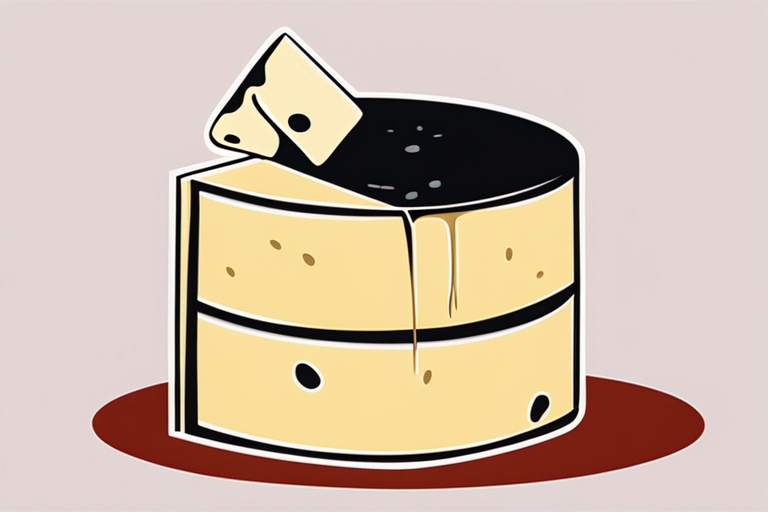
Signs that Beaufort Cheese Unopened Has Gone Bad
Get Your Free Food Safety Cheat Sheet
30 most common foods with instant answers. Print it and stick it on your fridge—completely free!
Signs that Beaufort Cheese Unopened Has Gone Bad
Beaufort cheese is a beloved French cheese known for its rich, nutty flavor and creamy texture. However, like all dairy products, Beaufort cheese can go bad if not stored properly. In this blog post, we will discuss the signs that Beaufort cheese, when unopened, has gone bad. We will also provide tips on how to store Beaufort cheese to ensure its freshness and safety. (Beaufort cheese unopened)
Understanding Beaufort Cheese
Before we delve into the signs of spoilage, let's first understand what Beaufort cheese is. Beaufort is a semi-firm, raw cow's milk cheese that originates from the Alps region of France. It is aged for a minimum of five months, during which it develops its distinct flavor profile.
Beaufort cheese is typically encased in a protective rind, which helps preserve its freshness and flavor. When properly stored, Beaufort cheese can last for several weeks or even months.
Signs that Beaufort Cheese Has Gone Bad
Even when unopened, Beaufort cheese can still spoil due to various factors such as temperature fluctuations, exposure to air, or improper storage. Here are the signs to look out for to determine if your Beaufort cheese has gone bad:
1. Foul Odor
- A strong, unpleasant odor is a clear indicator that Beaufort cheese has gone bad. If the cheese smells sour, putrid, or moldy, it's best to discard it.
2. Mold Growth
- While some cheeses such as blue cheese naturally have mold, Beaufort cheese should not have visible mold growth on its surface. If you notice any green, blue, or black spots on the cheese, it is a sign of spoilage.
3. Changes in Texture
- Fresh Beaufort cheese should have a smooth, creamy texture. If you notice any sliminess, excessive hardness, or graininess in the cheese, it may have gone bad.
4. Discoloration
- Beaufort cheese should have a pale yellow to golden hue. Any discoloration, such as dark spots or an off-white appearance, can indicate spoilage.
5. Sour Taste
- Taste a small amount of the cheese to check for any sour or bitter flavors. Spoiled Beaufort cheese will have an unpleasant taste that differs from its usual nutty flavor.
Proper Storage Tips for Beaufort Cheese
To prolong the shelf life of Beaufort cheese and prevent spoilage, follow these storage tips:
-
Store in the Fridge: Keep Beaufort cheese in the refrigerator at a temperature of around 35-40°F (1-4°C) to maintain its freshness.
-
Use Proper Wrapping: Wrap Beaufort cheese in wax paper or parchment paper to allow it to breathe while protecting it from moisture and odors.
-
Avoid Air Exposure: Limit exposure to air by securely wrapping the cheese and storing it in an airtight container or resealable bag.
-
Keep Away from Strong Odors: Store Beaufort cheese away from foods with strong odors, as cheese easily absorbs odors from its surroundings.
-
Check Expiry Date: If Beaufort cheese comes with an expiration date, be sure to consume it before the indicated date for the best quality.
By following these storage tips, you can enjoy fresh and delicious Beaufort cheese for an extended period.
Conclusion
In conclusion, Beaufort cheese, when unopened, can go bad if exposed to unfavorable conditions. By being vigilant and recognizing the signs of spoilage such as foul odor, mold growth, texture changes, discoloration, and sour taste, you can prevent consuming spoiled cheese.
Remember to store Beaufort cheese properly in the refrigerator, use appropriate wrapping materials, and keep it away from air and strong odors to maintain its quality. By practicing good food safety habits, you can ensure that your Beaufort cheese stays fresh and enjoyable. [Click here](/food/beaufort cheese unopened) to learn more about Beaufort cheese. (Beaufort cheese unopened)

Authoritative Food Safety References
These agencies and university labs inform every tip and health precaution we publish.
USDA FoodKeeper – Cold Storage Guidelines
Official refrigerator, freezer, and pantry timelines maintained by the U.S. Department of Agriculture.
Visit USDA FoodKeeperFDA Produce Safety Rule & Grower Guidance
Field-to-fridge handling practices that prevent contamination of fruits, vegetables, and leafy greens.
Visit FDA Produce SafetyCDC Foodborne Illness Prevention Hub
Surveillance-backed guidance on pathogens, symptoms, and steps to reduce foodborne illness risk.
Visit CDC Food SafetyUC Davis Postharvest Technology Center
University research detailing optimal storage atmospheres for produce after harvest.
Visit UC Davis PostharvestPenn State Extension – Home Food Preservation & Safety
Peer-reviewed extension bulletins on safe canning, chilling, and reheating practices.
Visit Penn State ExtensionCan unopened Beaufort cheese go bad?
How long does unopened Beaufort cheese last?
Can unopened Beaufort cheese make you sick?
How can I tell if unopened Beaufort cheese is spoiled?
What is the best way to store unopened Beaufort cheese?
Get Your Free Food Safety Cheat Sheet
30 most common foods with instant answers. Print it and stick it on your fridge—completely free! Want more? Upgrade to the complete guide with 70+ foods.
Scan your food directly and get instant safety info using our AI-powered camera feature.